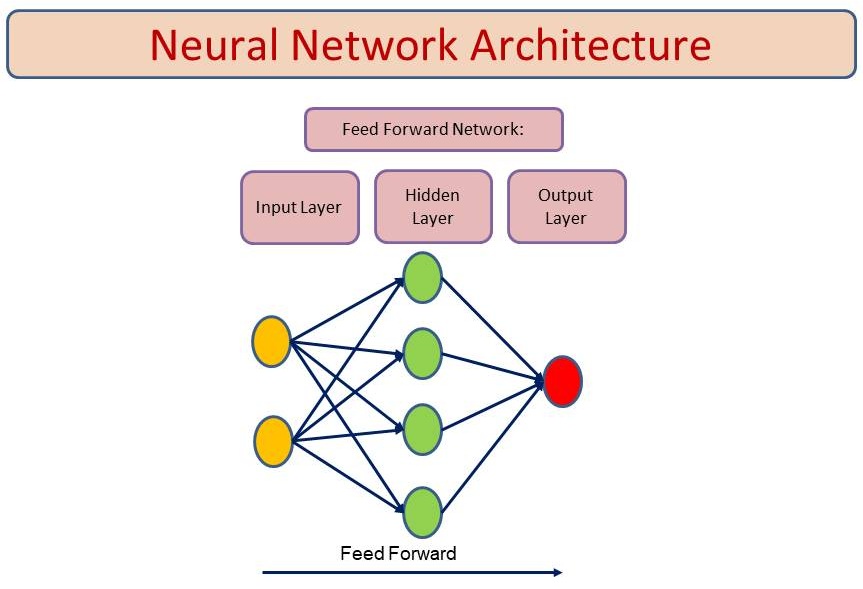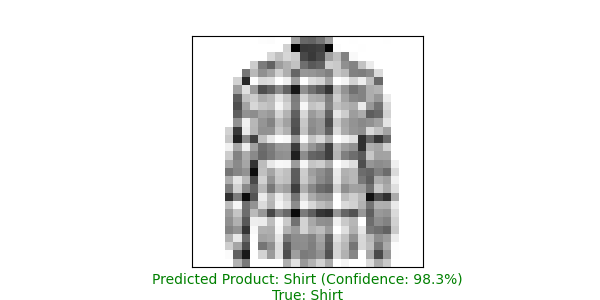Feedforward Neural Networks (FNN)
- A Feedforward Neural Network (FNN) is the simplest form of artificial neural network used in supervised learning.
- The data moves in only one direction—forward—from input to output through one or more hidden layers, without any loops or cycles.
- Each neuron in one layer connects to all neurons in the next layer, forming a layered structure.
- These networks are foundational in machine learning and serve as a base for more complex models like CNNs, RNNs, and LSTMs.
- It is also called Vanilla Neural Network, as it is the most basic form of a neural network
Why Use Neural Networks?
Neural networks are powerful because they can:
- Learn non-linear patterns in data that traditional models struggle with.
- Automatically extract features, reducing the need for manual feature engineering.
- Handle large, high-dimensional data like images, text, and time series.
- Generalize well with enough data and proper regularization.
Neural Network Architecture & How It Works

A typical FNN consists of:
- Input Layer
- Receives raw data
- A unique weight value is linked to each input in a neural network.
- Hidden Layer
- Apply transformations using weights, biases, and activation functions.
- The transformations begin by multiplying inputs with their weights, adding a bias to the result, and then passing the total value or weighted sum through a non-linear activation function.
- Output Layer – Produces the final prediction (e.g., class probabilities in classification).
How It Works:

Forward Propagation:
- A series of inputs pass through the layer and are multiplied by the weights in this model.
- In each neuron, weighted input summed together with bias to form weighted sum
z=w1x1+w2x2+…+wnxn+b, where w = weights, x = inputs, b = bias.
- An activation function (e.g., ReLU, Sigmoid) introduces non-linearity: a = f(z).
- If the sum exceeds a set threshold (usually zero), the output is 1; otherwise, it’s -1.
- If sum > threshold (often 0), output = 1.
- If sum < threshold, output = -1 (binary classification).
Output Calculation:
- The final layer produces predictions
- Calculate loss
- Use Cross-Entropy for classification, MSE for regression to calculate loss
- Backpropagation:
- Compute gradients of loss w.r.t. weights.
- Update weights using Gradient Descent (Minimize the loss function by iteratively adjusting weights)
w=w−η⋅∇wL where η = learning rate, ∇wL = gradient of loss.
Activation Functions Used in FNN
Activation functions add non-linearity to the model, allowing it to learn complex functions.
- ReLU (Rectified Linear Unit) – Most common for hidden layers.
f(x)=max ( 0 , x )
- Sigmoid – Often used for binary classification.
f(x)=1/ (1+e−x)
- Softmax – Used in output layer for multi-class classification.
Python Implementation of a Feedforward Neural Network (FNN)
import tensorflow as tf
from tensorflow.keras import layers, models, datasets
import numpy as np
import matplotlib.pyplot as plt
# Load Fashion-MNIST dataset
(train_images, train_labels), (test_images, test_labels) = datasets.fashion_mnist.load_data()
# Class names for Fashion-MNIST
class_names = ['T-shirt/top', 'Trouser', 'Pullover', 'Dress', 'Coat',
'Sandal', 'Shirt', 'Sneaker', 'Bag', 'Ankle boot']
# Normalize pixel values to [0, 1]
train_images = train_images / 255.0
test_images = test_images / 255.0
# Build FNN model (MLP with 1 hidden layer)
model = models.Sequential([
layers.Flatten(input_shape=(28, 28)), # Input layer (flatten 28x28 image to 784 pixels)
layers.Dense(128, activation='relu'), # Hidden layer (128 neurons, ReLU activation)
layers.Dense(10, activation='softmax') # Output layer (10 classes, softmax)
])
# Compile the model
model.compile(optimizer='adam',
loss='sparse_categorical_crossentropy',
metrics=['accuracy'])
# Train the model
history = model.fit(train_images, train_labels,
epochs=10,
validation_data=(test_images, test_labels))
# Evaluate on test set
test_loss, test_acc = model.evaluate(test_images, test_labels)
print(f"\nTest Accuracy: {test_acc:.4f}")
# Make predictions
predictions = model.predict(test_images)
# Visualize a sample prediction
def plot_prediction(i):
plt.figure(figsize=(6, 3))
plt.imshow(test_images[i], cmap=plt.cm.binary)
predicted_label = np.argmax(predictions[i])
true_label = test_labels[i]
color = 'green' if predicted_label == true_label else 'red'
plt.xlabel(f"Predicted Product: {class_names[predicted_label]} (Confidence: {100*np.max(predictions[i]):.1f}%)\nTrue: {class_names[true_label]}",
color=color)
plt.xticks([]); plt.yticks([])
plt.savefig('prediction.png')
plt.show()
plot_prediction(7)


